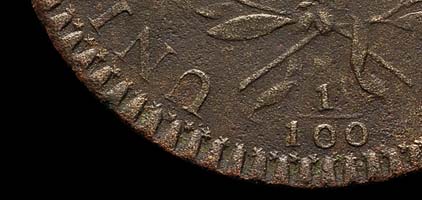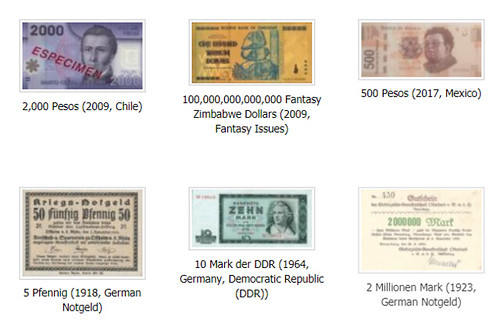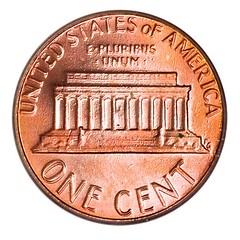
PREV ARTICLE
NEXT ARTICLE
FULL ISSUE
PREV FULL ISSUE
NOTES FROM E-SYLUM READERS: OCTOBER 20, 2019The Owen Discovery 1794 Starred Reverse Cent
 Pete Smith writes: The October 13, 2019 issue of The E-Sylum included a report from Gene Owen on the 1794 Starred Reverse Cent he discovered. He wrote, “I bought a 1794 book from some guy in Michigan who said mine would be called the ’Owen Discovery‘ !” Editor Homren commented, “I assume the 1794 book was Al Boka's 2005 book Provenance Gallery of the Year 1794, United States Large Cents.” I suggest there may be another answer. I published 250 copies of The Story of the Starred Reverse Cent around July of 1986. Gene Owen was the first person to report a coin that was not in the book. I sold him copy 105 of the book on November 4, 1986. I wrote up the discovery for the January 15, 1987 issue of Penny- Wise, on page 49. Early in 1987 I had three starred reverse cents in my apartment that had been loaned for photography. My photos were published in the July 15, 1987 issue of Penny-Wise on page 212. The first coin was the one called the Gene Owen discovery. Gene was fuzzy on some of the details - Glad we straightened this out. -Editor To read the earlier E-Sylum article, see:
Those Bright Red Circulating Memorial Cents
Last week I reported seeing an unusual number of bright red Lincoln Memorial cents in circulation. -Editor David Lange writes: I believe I can shed some light on the mystery of so many fresh-looking Lincoln Memorial cents that you've been observing.
I buy coin sets frequently to get desirable folders or albums for my collection, carefully removing the coins. l can then sell the undamaged Wheat cents on eBay by re-inserting them into one of the countless common coin boards or folders I have in stock, but the Memorial cents don't even pay for the cost of shipping. Thus, I dump them into the ashtray of my car and use them up whenever paying in cash. Ditto for the corroded and damaged Wheat cents that come my way. This is how a bright red 1961 cent reappears in circulation. If I buy a collection of circulated Jefferson nickels to get their holder, the only coins worth more than face value are the 1938-D and S, 1939-D and S, 1950-D and the silver war nickels. The rest go right back into circulation, including many 70-year-old coins in XF and AU condition. There's a long history of such recycling of common, low-value coins. When I was collecting coins from circulation in the second half of the 1960s, I frequently found XF or AU, semi-key Jefferson nickels such as 1946-S and 1951-S. What was especially puzzling was that the common P and D nickels of those years typically were quite worn from 20 years service. Only later did I learn that when the speculative mania for BU rolls collapsed in 1964, many persons were buried in their investment, having taking out loans to buy rolls of common coins. To recover some of this money, these semi-key coins were simply cashed in at face value, becoming common in lightly worn condition for the next few years. I have some rolls of my own put away somewhere in the mid 1970s when there was talk of a change in the composition of the cent. Luckily I later found more interesting and profitable numismatic pursuits. Perhaps their future fate is to be spent as well. At least that might help encourage a future collector or two. -Editor To read the earlier E-Sylum article, see:
The Colnect Banknote Catalog
 Kavan Ratnatunga writes: I thought I would write a few thoughts about Aidan Work's suggestion for a banknote catalogue. I have seen such suggestions even within the International Bank Note Society (IBNS) forum. https://colnect.com/en/banknotes has posted over 100,000 banknotes and claims to serve 20,000 banknote collectors. https://colnect.com/en/coins has over 140,000 coins and claims to serve 35,000 coin collectors. I have found colnect.com a useful resource and I helped to clean some the errors out of the Ceylon/Sri Lanka sections as I have helped with the Standard Catalog of World Paper Money and The Banknote Book. However, I have been able to put a lot more detail in my own websites at lakdiva.org which is not practical for a global site. Colnect is a community-based platform, so why not use it rather than start yet another platform? I agree it has it's problems, but it seems to have attracted many and will get better only if more serious numismatists guide its development. I was not familiar with this site. It covers a wide range of collectibles in addition to coins and paper money, -Editor To read the earlier E-Sylum article, see:
Some Musings on "In God We Trust"
We must not forget the call of the gold-bugs: "Ingot we trust". Or, the sign which appeared several years ago atop a merchant's counter: "In God we Trust--All others pay cash". But, most of all, in celebration of the autumn season, the upcoming November (would have been 97th) birthday of Charles Schulz, and the legions of followers of Peanuts' Great Pumpkin: "In Gourd we Trust"... To read the earlier E-Sylum article, see:
Electrotype of the 1804 Restrike Cent Whereabouts Sought
I collect electros and am interested in the 1804 Restrike electrotype noted by David Lange. If anyone knows who owns it please ask them to get in touch with me. Can anyone help? -Editor To read the earlier E-Sylum article, see:
The French Banknotes Web Site
Martin Kaplan shared these interesting articles from Dave Mills' French banknotes site. Thanks. -Editor Introduction to Collecting Banknotes
This article is a summary of the key questions a new collector may have regarding the hobby. To read the complete article, see:
The Creation of a French Banknote
 It is quite a project to create finished banknotes, ready for distribution. I have laid out the general steps involved, from artist's sketches through to finished product, with examples (where I have them!) at various stages of the process. To read the complete article, see:
 Wayne Homren, Editor The Numismatic Bibliomania Society is a non-profit organization promoting numismatic literature. See our web site at coinbooks.org. To submit items for publication in The E-Sylum, write to the Editor at this address: whomren@gmail.com To subscribe go to: https://my.binhost.com/lists/listinfo/esylum All Rights Reserved. NBS Home Page Contact the NBS webmaster 
|

